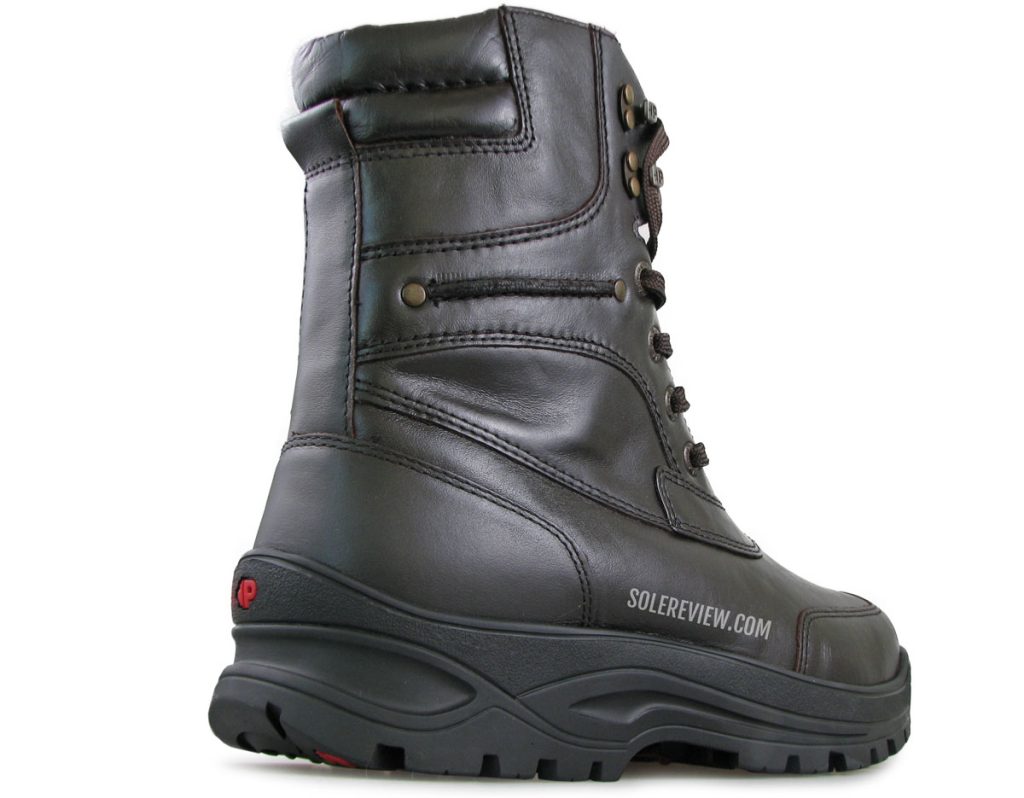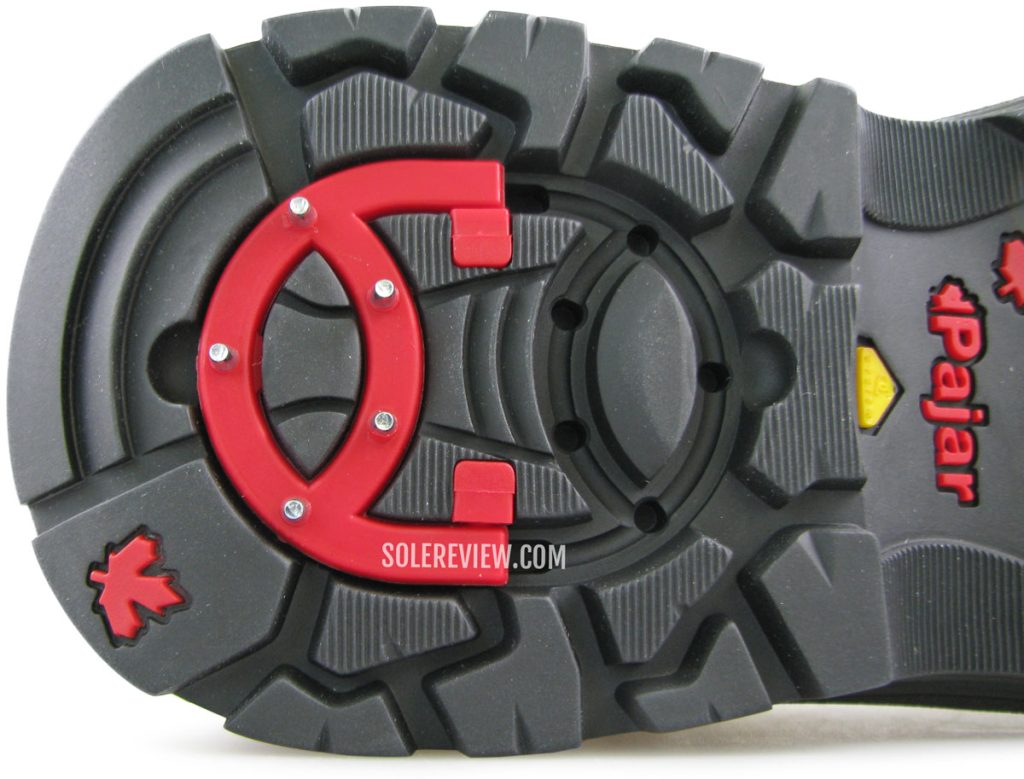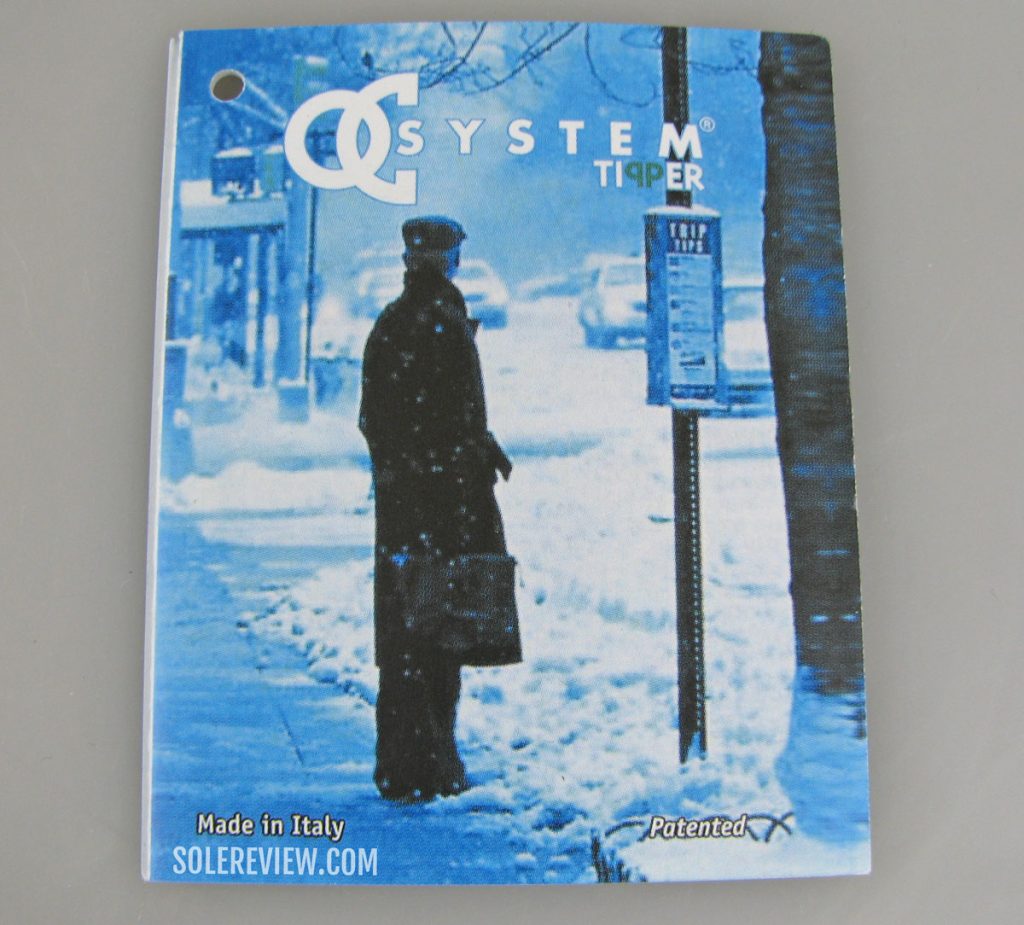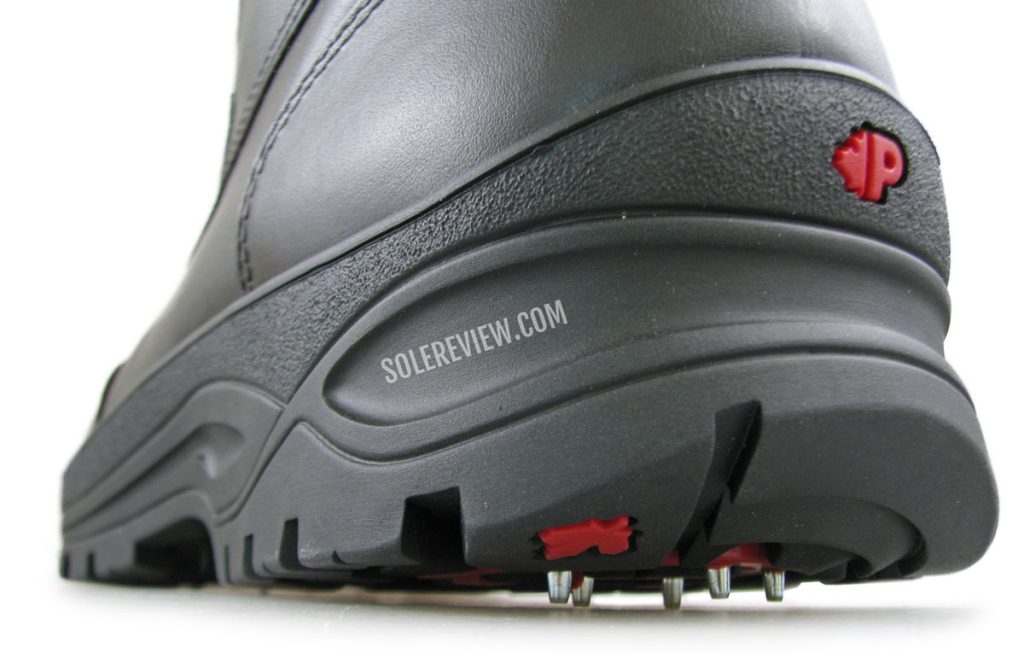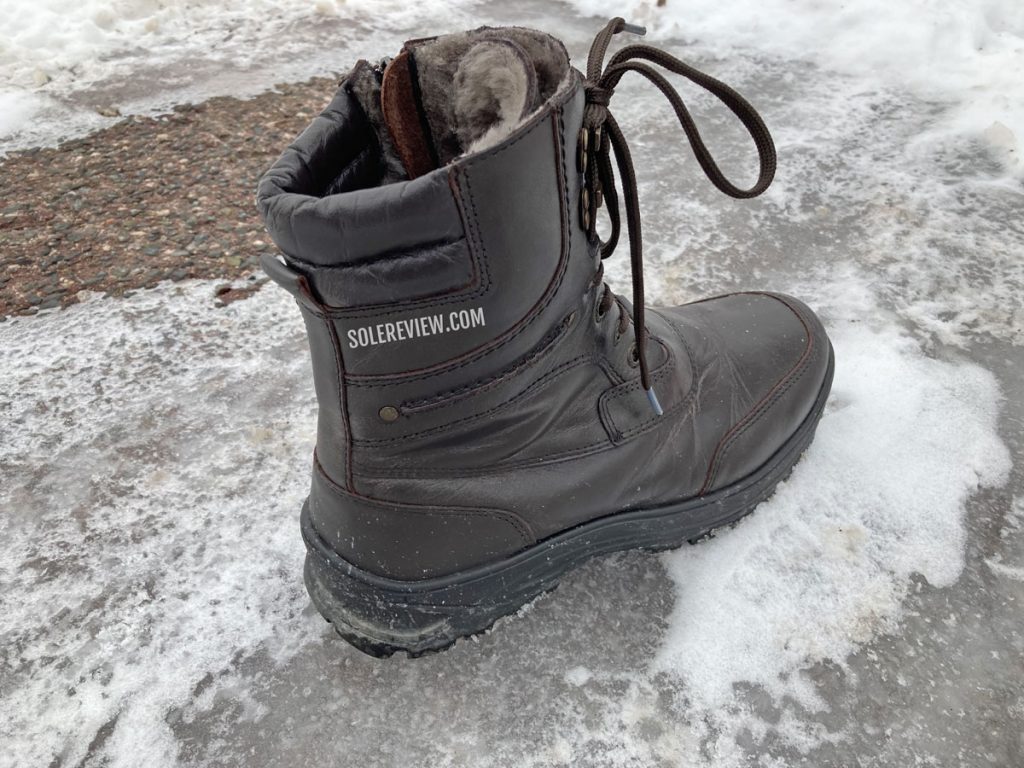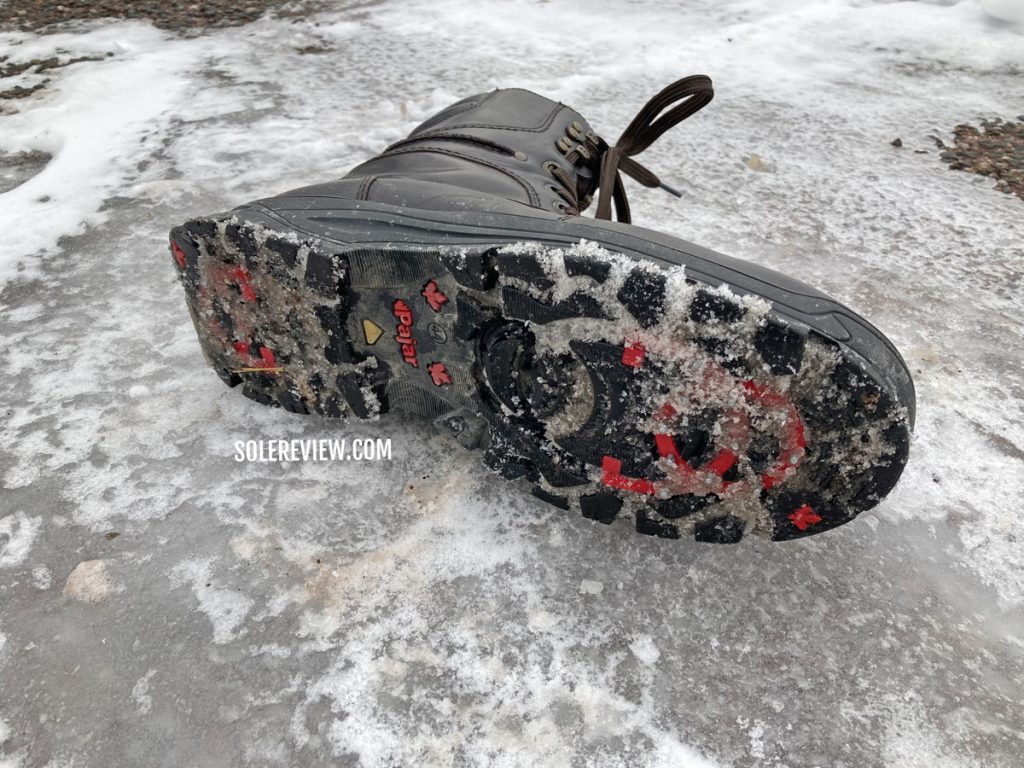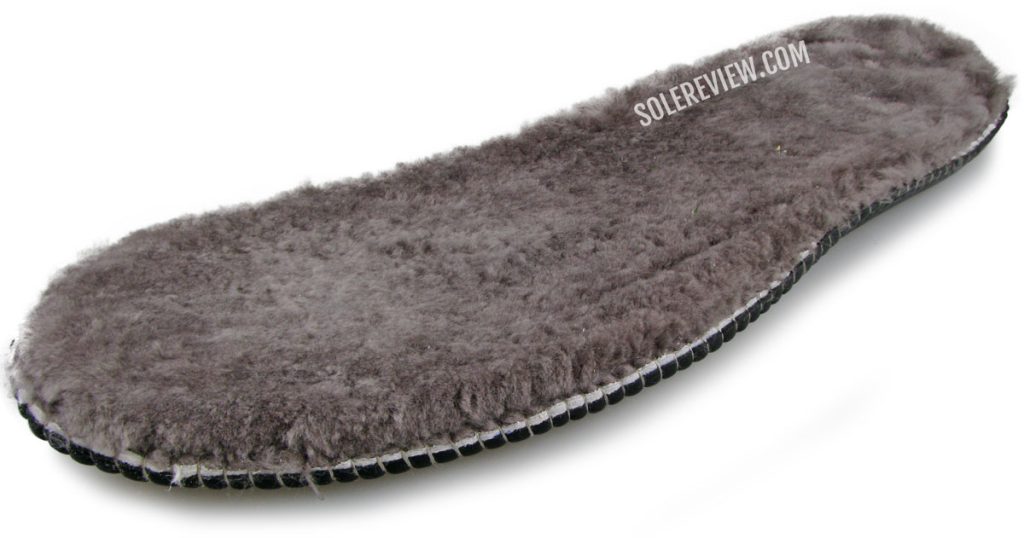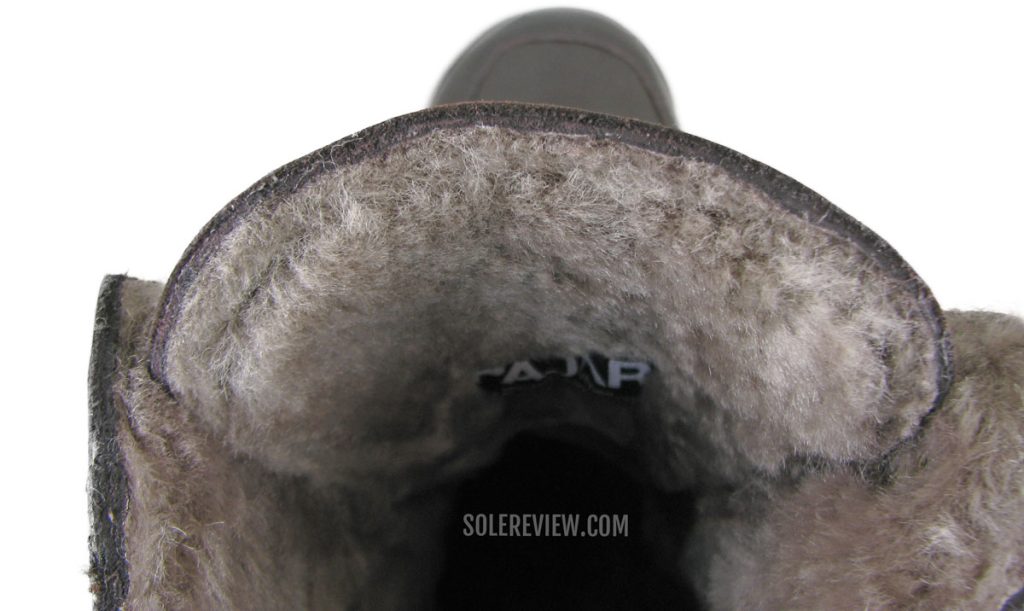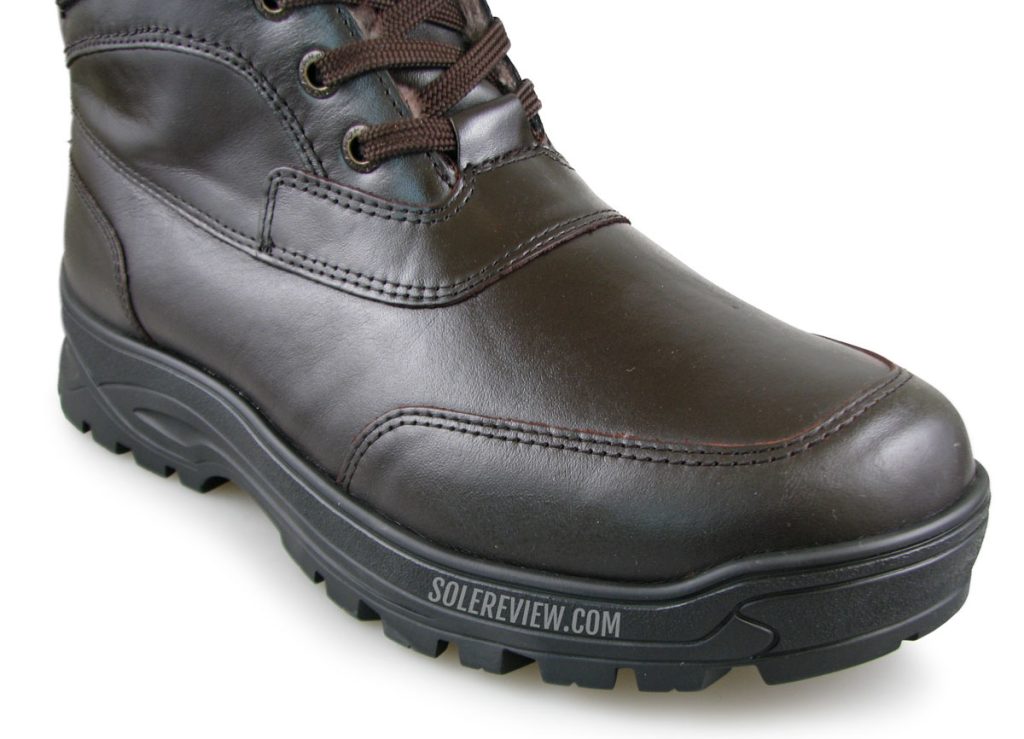The Pajar Carson was purchased at full retail price for our review. The amount is in Canadian Dollars.
INTRODUCTION
We purchased the Pajar Carson boot only because we had to test shoes with cleated outsoles for our recently published buyer’s guide.
The retractable spikes of the Pajar boot is an interesting concept, as it bridges the chasm between fully-spiked shoes and aftermarket traction devices like the Yaktrax and Kahtoola.
It must be pointed out that the retractable stud system isn’t a Pajar invention. It’s supplied by an Italian outsole manufacturer named ALPI soles.
Nonetheless, Pajar seems to be the only brand that sells a broad assortment of shoes with that outsole. Anything new in footwear usually piques Solereview’s interest, so here we are with an in-depth review.
Pajar is a Canadian brand with a very limited international presence. Unlike other Canadian brands like Lululemon or Canada Goose which are just as popular globally as they are in Canada, Pajar appears content with the domestic market.
However, we also believe that the quality of the product and service plays a greater role than brand ambition.
We bought Pajar’s top-of-the-line Carson boot. It’s Canadian-made, and uses a comfortable leather upper with genuine Shearling lining. The rubber sole has the retractable OC System that works as advertised. We bought it to test it on slippery surfaces with hardened ice, and it did not disappoint.
But a shoe needs to be a lot more than a nice leather upper and Canadian manufacturing. Those things mean nothing without a well-designed shoe that takes best practices into account.
According to Pajar, it’s been around since 1963 and advertises its Canadian manufacturing heritage as one of the selling points.
Despite the abundance of maple leaf-inspired (Canadian flag) design elements, not all of its shoes are made in Canada. Pajar’s entry-level products are made elsewhere, including in China. But that’s not a contentious subject; most shoe brands make their shoes in Asia to remain competitive.
Other than the Carson, we haven’t tried other Pajar products. That being said, if the Carson (and Carrefour) is Pajar’s premium made-in-Canada product, then the brand has a lot way to go before being taken seriously as a luxury boot manufacturer – even a niche one.
$400 for a shoe puts Pajar in the same territory as US-made boots from Danner, Allen Edmonds, and Wolverine, so a high level of quality and finishing is expected. Portland-based Danner, in particular, executes the retro hiking boot silhouette extremely well.
Sadly, the Pajar Carson falls short of premium boot-making standards. Apart from the premium Shearling leather and OC System outsole, the rest of the upper is poorly designed. The shoe is supposed to be waterproof, but the tongue and side zipper lack a gusset. The leather heel pull tab is non-functional.
The fit is sloppy as well. The broad Nylon laces feel clumsy, and the eyelets are too close to one other – thus reducing the lacing efficacy. The lacing also begins on the midfoot, so the forefoot doesn’t feel secure. For whatever it’s worth, most Pajar shoes – except for Sedman – look very dated.
Going by the negative reviews on Sitejabber, the customer service doesn’t seem great either.
As we said, the only reason why you should buy the Pajar Carson or Carrefour boot is for their Shearling leather upper and retractable cleat outsole.
THE RIDE EXPERIENCE
The highlight of the Pajar Carson boot is its OC System outsole. Embedded in the rubber outsole are two separate hinges with cleated and non-cleated sides.
Most of the spikes – 11, to be exact – reside on the forefoot hinge, whereas the rear section has 5 spikes. The hinge of the TPU base plate is operated with the included key device.

This pocket tool is supplied with every Pajar product that has an OC system outsole. The curved loop helps flip the outsole hinge to activate the spikes or retract them.
The bent hook of the key is inserted into a groove to flip the hinge in the desired orientation. The loop can be folded back into the groove of the key case, which is the size of a standard car remote.
Switching the studs into an on-off position isn’t an effortless process. The small size of the groove is hard to locate and slot into, so it takes some work to flip the hinge – and it’s harder if you’re wearing the shoe and are not as flexible.
Even after a week or two of owning the shoe, operating the OC System involved a lot of fumbling movements.
That makes the Pajar Carson useless for most of the senior population since this requires a high level of hand-eye-boy coordination. It’s worse when the outsole gets clogged and fills the groove.
With the cleat side on, the Carson’s grip on hardened ice is great.
The thin metal studs bite into the ice, in a way that’s similar to a traction device. The forefoot has sufficient cleat density for grip, and so does the 5-point heel.
While the OC system has excellent performance on dry ice, it isn’t without compromises.
The TPU hinge results in a relatively flat outsole geometry when the spikes are not activated. The surface of the TPU hinge is smooth, and so is the outsole surrounding it.
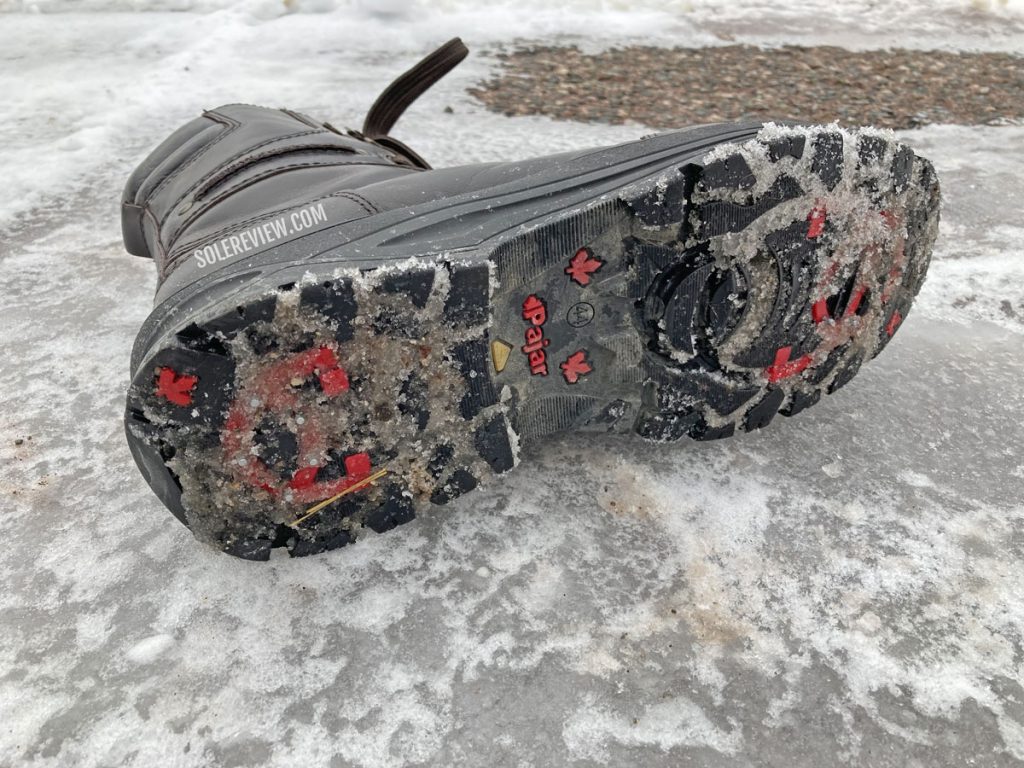
The cleats aren’t mounted on the rubber lugs, so their short length is limiting factor on slush or snow-covered surfaces.
The absence of the deep lugs makes the Pajar outsole slippery on soft slush and snow. It does okay in wet and dry conditions alike, but it’s not a versatile shoe for wintery surfaces.
Even with the cleat side activated, its grip is only as good as the length of lugs. There are a couple of important differences between fully-cleated outsoles and the OC System.
Firstly, shoes with fixed studs cover a much wider area. In contrast, the metal spikes of the Pajar boot are concentrated in a tiny area. So one needs to get a sense of where the cleats are, and how to best use them.
Secondly, the OC system only works if it’s in direct contact with the hard ice. If there’s a thin layer of slush on snow above, then the quality of grip quickly deteriorates.
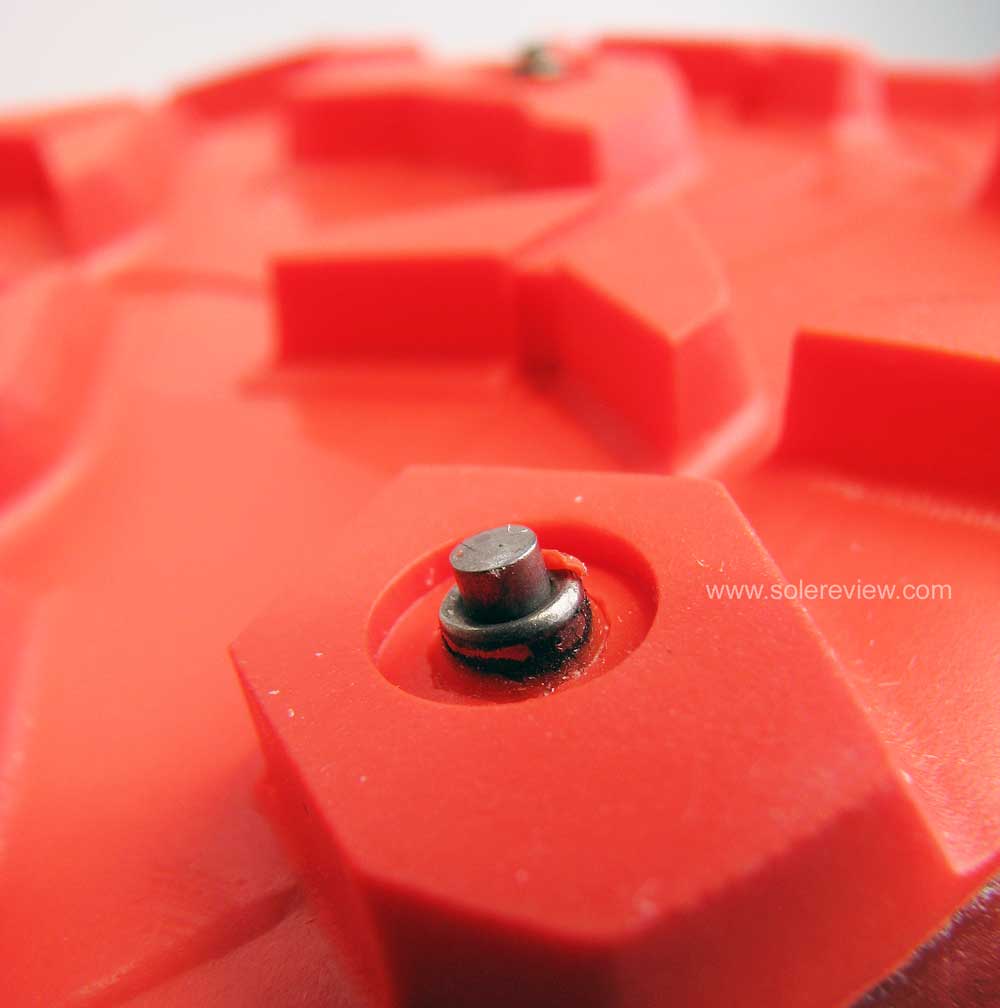
The metal studs on the Salomon Snowspike CSWP are mounted on lugs, thus allowing them to grip deeper.
Shoes with fixed cleats have the latter mounted on the rubber lugs – thus allowing the metal spike to dig deeper into softer surfaces. For example, the Salomon Snowspikes’s metal studs also take advantage of the rubber lugs.
That’s not the case with the OC System outsole. The cleats aren’t mounted on deep lugs, but on a flat surface – thus limiting their reach on roads and sidewalks that are covered with a thin layer of snow or crushed ice.
It’s also important to retract the OC system studs before going indoors. Else, the metal spikes will slip on smooth floors as well as damage them.

Use the OC System on hardened or black ice that’s not covered with snow. For everything else, it isn’t very useful.
In short, any shoe with the OC system outsole has limited versatility. It’s best used on days when the sidewalks ice over, and when you don’t want to carry around a pair of traction device.
Since our review is based on a brief ownership period, we’re unsure how durable the OC system is. So far, the spikes haven’t bent, nor has the hinge cracked.
The ride comfort is average, given how stiff the sole is. There’s no separate midsole here, since the entire sole is one unit.
The Pajar Carson uses a board-lasted construction, and that too, contributes to the stiffness.
The insole is excellent, and unlike any other. The EVA base has a genuine Shearling footbed, and this wool fleece is excellent at keeping the foot insulated.
The ultra-cozy Shearling fleece adds a layer of step-in softness. The thick sole also acts as an insulating layer, and kept the foot warm our test walks during -10 C ( 14 F) days. The Carson’s outsole should be good for -25 C ( – 13 F) weather, provided it’s actively used and not standing in one spot.
Though the Pajar Carson is a very heavy shoe, its stable midsole creates a very planted ride quality. That’s great for walking on uneven surfaces that are crusted over with ice.
But as we said many times before, the stability of any shoe is only as good as its upper fit.
THE UPPER DESIGN AND FIT
There are a few things that we don’t like about the upper, but the Shearling-lined leather exterior isn’t one of them.
The interior is generously covered in a thick nap of genuine Shearling – the wool side of Sheepskin. Unlike most synthetic fleece (like Sherpa or Polar) that is adhered artificially to the lining, Shearling comes naturally attached to the original hide.
And we say covered, the whole shoe is full of it. Even the insides of the toe-box are Shearling lined, and so is the tongue flap.
Pajar hasn’t cut corners with the material. Real Shearling is not cheap; the side zip is YKK hardware as well.
The grain side of the leather upper is soft and waterproof. The surface treatment is what gives the corrected leather a shiny appearance; that’s the trade-off of waterproofing.
Full-grain Aniline leather is rarely used on waterproof shoes because of its porous grain structure.
The Pajar Carson has a strange fit. It’s got a fairly secure forefoot, a long sizing, and a sloppy midfoot fit. There’s excess material on the arch side that gives the shoe a floppy appearance.
Sure, the long fit isn’t so much of an issue. It’s only a half size larger than it needs to be, so wearing a pair of thick socks will remedy it. However, it’s hard to fix the midfoot or the lacing set-up.

The lacing begins on the midfoot, and the eyelets are too close to each other. The broad Nylon laces are also a strange choice. For a waterproof shoe, omitting a tongue bellow or gusset is an unforgivable sin.

Even the metal loops on the opposing sides are too close. They need to be set apart farther for better lacing efficiency.
The opposing eyelets and loops are too close for the lacing to be effective. The lacing also begins halfway on the midfoot instead of the base of the forefoot – like how most boots are designed.
Besides making the forefoot look blank and elongated, the shorter lacing panel is a limiting factor. All the design flaws make it hard to get a secure lock-down.
The most glaring flaw is the lack of a tongue bellow. For a shoe that advertises itself to be waterproof, neither the tongue or side zipper is backed with a gusset.
There’s a leather flap behind the zipper, but that’s not the same thing as a gusset. And the tiny heel pull tab is hilarious. Why even bother putting it there?
PROS AND CONS
We’ll lay out the positives first. We got this shoe for its ice-gripping outsole over everything else, and it doesn’t disappoint. When flipped on its cleated side, the metal studs do an excellent job of gripping hard ice that’s not covered with snow.
The Pajar boot is a good alternative when you don’t want to carry an extra pair of traction device.
The upper and footbed use a high-grade Shearling lining – a material that’s not commonly found in winter boots. The natural fleece makes the interiors very comfortable and warm.
However, the Pajar Carson projects a sense of design apathy. The sloppy fit, lack of a gusset, and strange lacing make us wonder if Pajar even has a pattern-maker and designer on its payroll. It’s almost as if Pajar stopped improving the shoe after the first pattern trial.
The OC system isn’t as versatile as we expected it to be. Its non-spiked side doesn’t grip well on soft slush and light snow, and flipping the hinge also takes some work – even with the supplied key.
SHOES SIMILAR TO THE PAJAR CARSON
Besides other Pajar models with an identical OC System sole, are there other winter shoes with a retractable cleat setup? Not as far as we know.
Therefore, you have a couple of options. Either get a pair of aftermarket traction device like the Kahtoola Exospike, or buy a fully spiked boot. For the trail, the Salomon Snowspike CSWP is highly recommended.
Other options are the Salomon Shelter boot or the Icebug Hova insulated Chelsea boot. Both shoes have a metal-studded outsole with warm uppers. We wrote about these products in a recently-published buyer’s guide.

